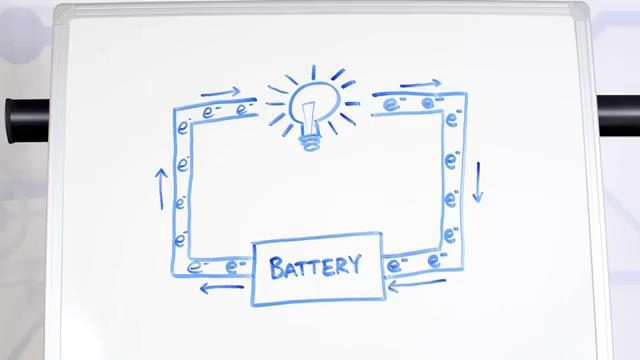Electricity_Basics_Part_1_Charge.pdf
Electrical Charge
Electricity is the movement of electrons. When electrons move, they create energy. This energy is how we get electricity which provides power for things like lightbulbs, phones, etc. This movement creates electrical charge. In order to manipulate this charge, we must understand the building blocks of electricity: Current, Voltage, and Resistance. We manipulate charge in circuits (a path in which electrons can move). A circuit must have a power source and place for electrons to flow to. In a battery, electrons flow from the positive terminal of the battery to the negative terminal of the battery. Without the loop, the electrons will not flow. Voltage, Current, and Resistance allow us to control how those electrons, or the charge in a particular circuit, behave.
Transcript:
[0m:4s] Hi I'm Josh Bloom, welcome to another video in the RSP Supply education series. If you find that these videos are helpful to you, it certainly helps us out if you could give us a big thumbs up and subscribe to our channel.
[0m:16s] In today's video, we are introducing a new series of videos that will focus on the fundamentals of electricity and the building blocks that allow us to manipulate and control electricity in so many different ways.
[0m:33s] We hope this brief video series will be a guide for those trying to learn the basics of electricity and allow you to build a solid foundation which can help you better understand is sometimes complicated topic.
[0m:48s] In this series, we will focus on very simple specific topics for each video in hopes that with each video, your level of understanding increases.
[1m:1s] Some of the subjects we will cover which you can look forward to include basics on voltage, current or amperage, electrical resistance, ohms law and others. For today's video, we are going to keep things simple and focus on a very basic electrical principle that is electrical charge.
[1m:24s] When thinking about electricity, it is important to be able to understand what it actually is and how it is created.
[1m:32s] Electricity is simply the movement of electrons.
[1m:36s] When electrons move, they create energy. This energy is how we get electricity in which in turn can provide power for things that we need. For instance, powering a light bulb or charging your phones.
[1m:51s] It is in this movement of electrons that creates electrical charge.
[1m:57s] In order to manipulate this electrical charge, so that it will behave in a way that we need it to, it is important to understand the foundational building blocks of electricity and how we use them.
[2m:12s] I am referring to voltage, current, and resistance.
[2m:18s] These three principles and their values in relation to electricity are what allow us to manipulate electrical charge
[2m:28s] to do what we want.
[2m:29s] When we manipulate electrical charge, or the movement of electrons,
[2m:34s] this is usually done in what is called a circuit. A circuit is simply a path in which electrons can move.

[2m:44s] In order for a circuit to function properly, it needs to have a power source
[2m:50s] and somewhere for the electrons to flow to.
[2m:54s] In the case of a battery, the electrons will flow from the positive terminal of the battery
[3m:0s] to the negative terminal of the battery.
[3m:2s] If this loop is not present, the electrons or the electrical charge will not flow.
[3m:10s] So the circuit must always have this cycle and return back to form a loop.
[3m:16s] The different components we mentioned before voltage, current, and resistance are what allow us to control how those electrons or the charge within a particular circuit behave.
[3m:28s] In the next video in this series, we will discuss the first of those three principles: voltage. So, make sure to join us in the next video and we'll see you, then.
[3m:38s] For a full line of electrical hardware and thousands of other products, please go to our website. For more information or other educational videos, go to RSPSupply.com, the Internet's top source for industrial hardware. Also, don't forget: like and subscribe.




